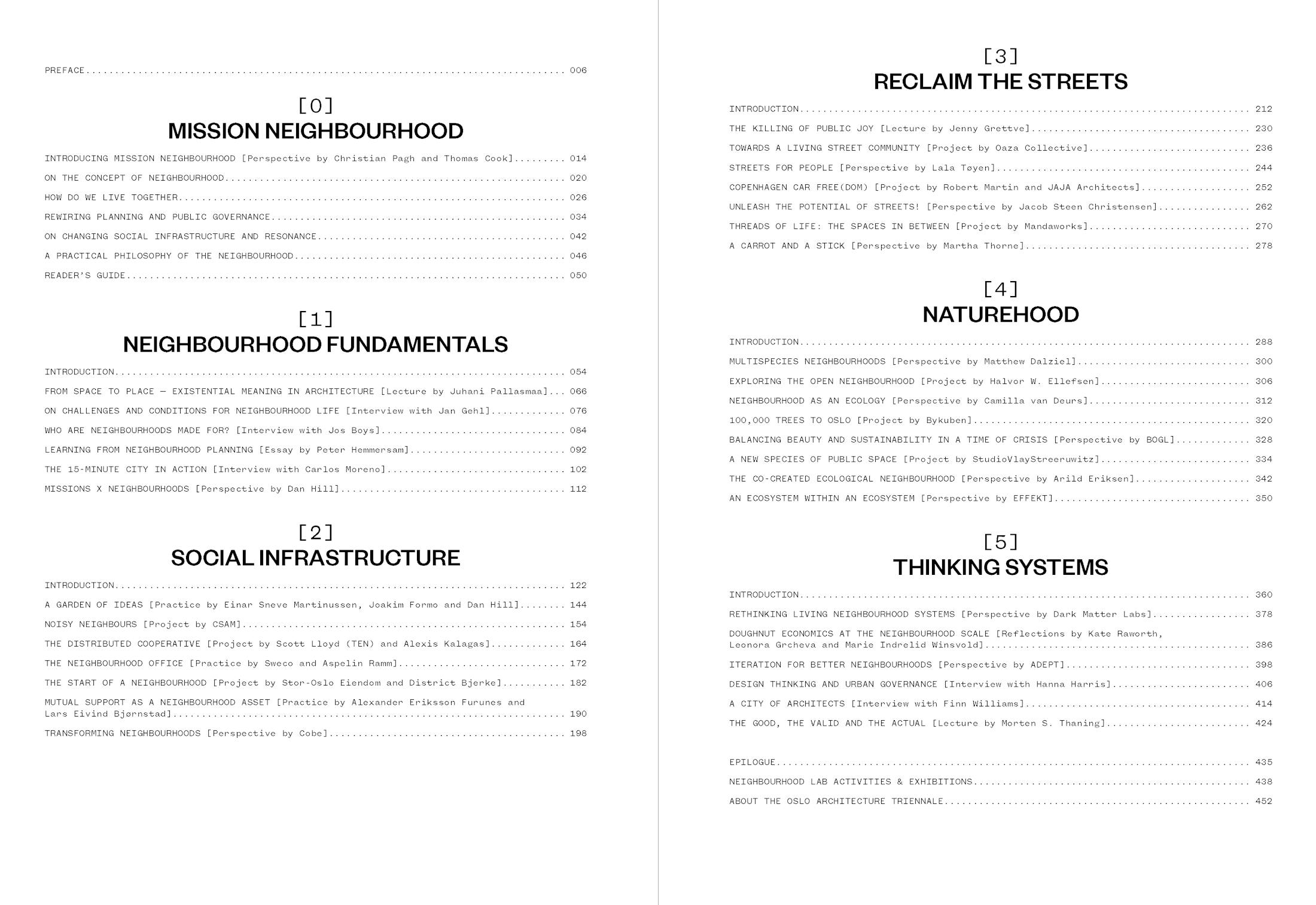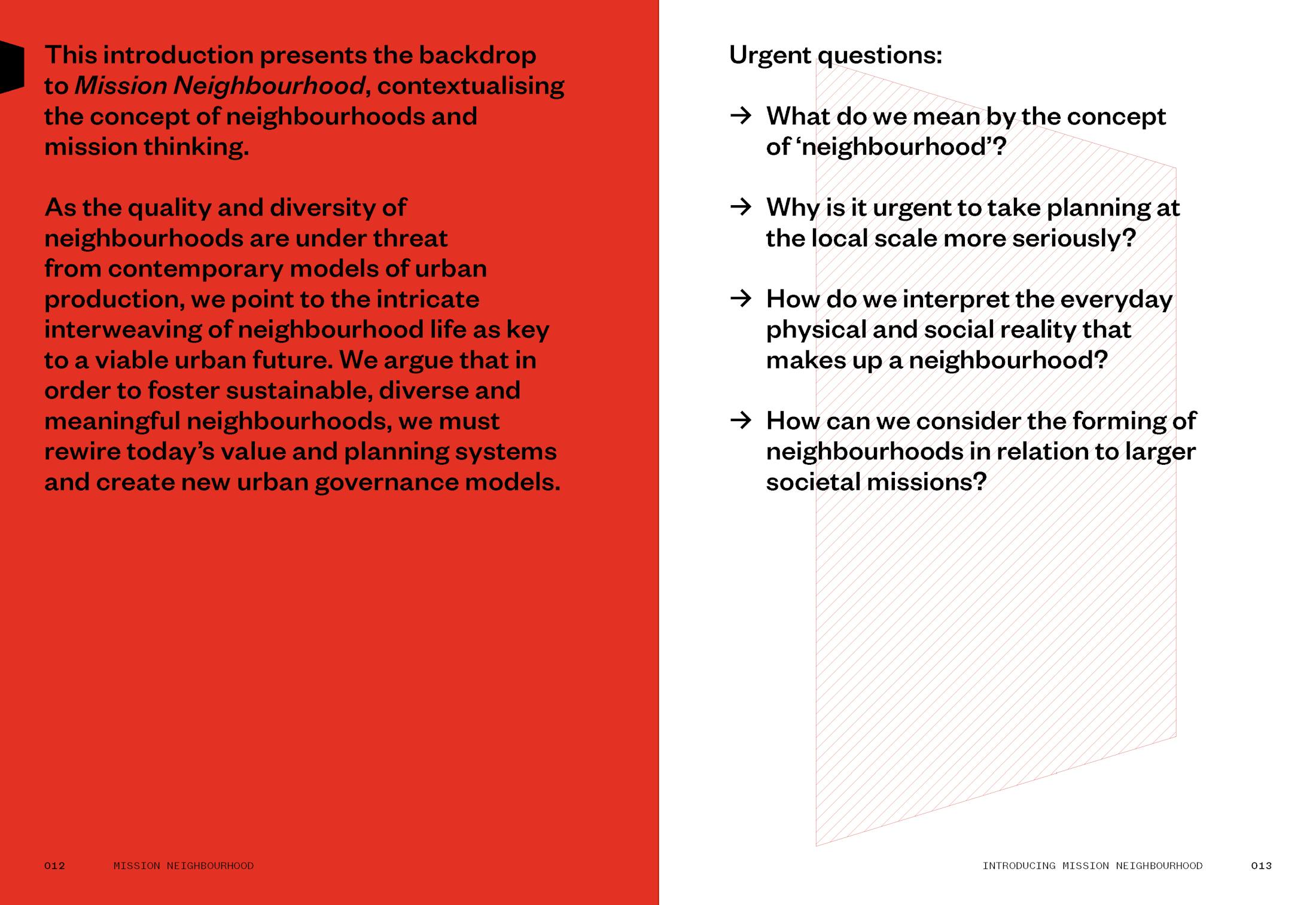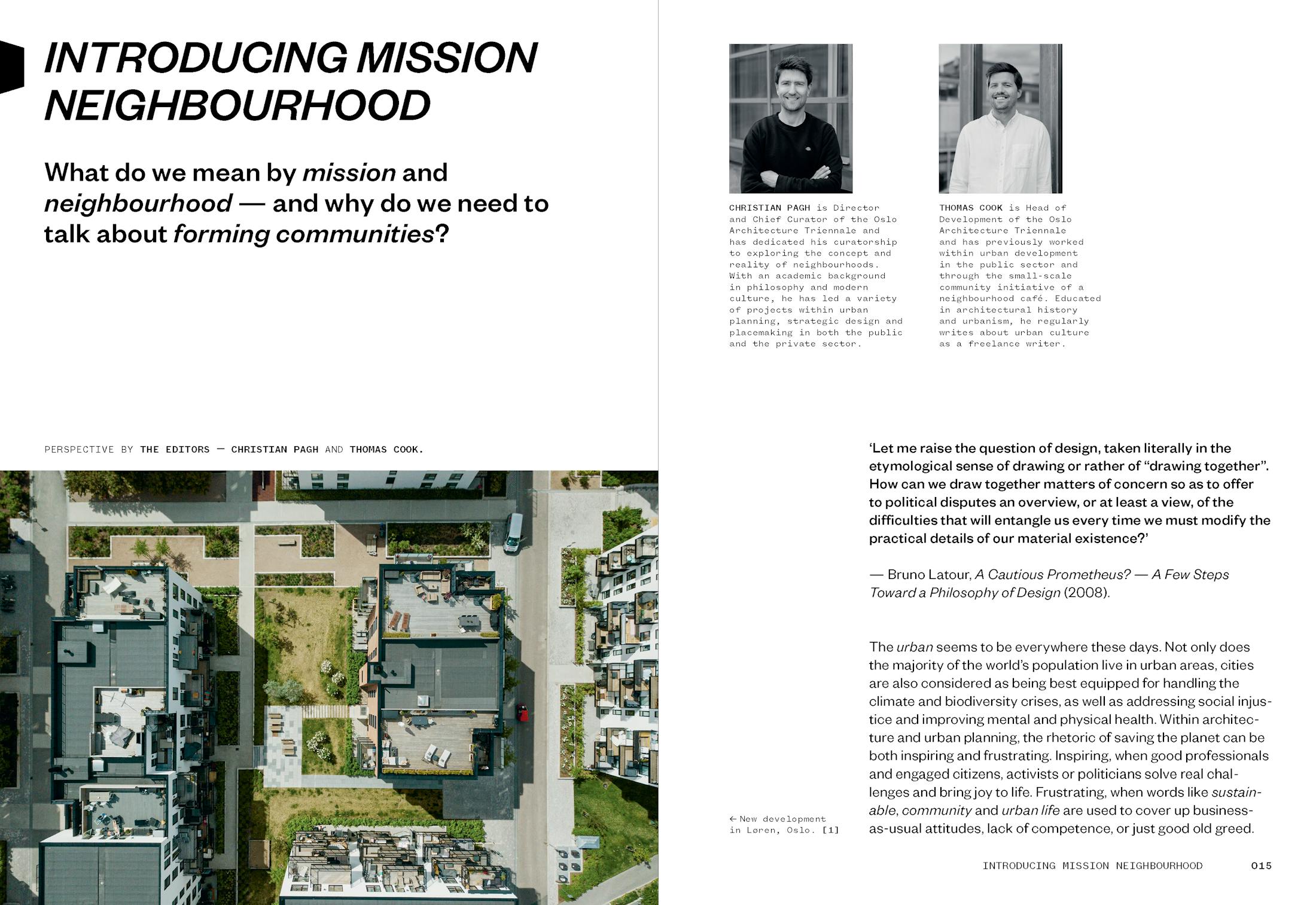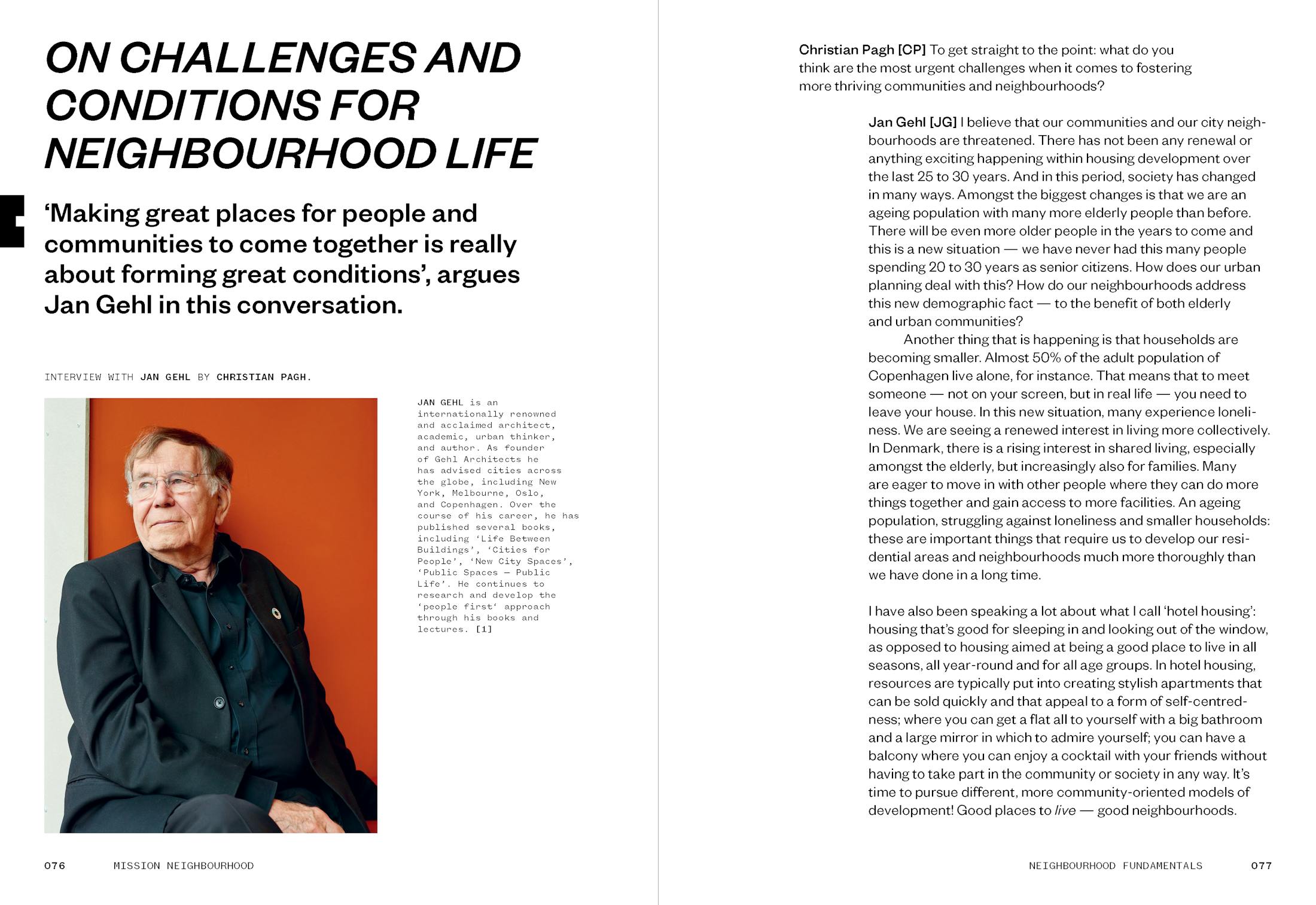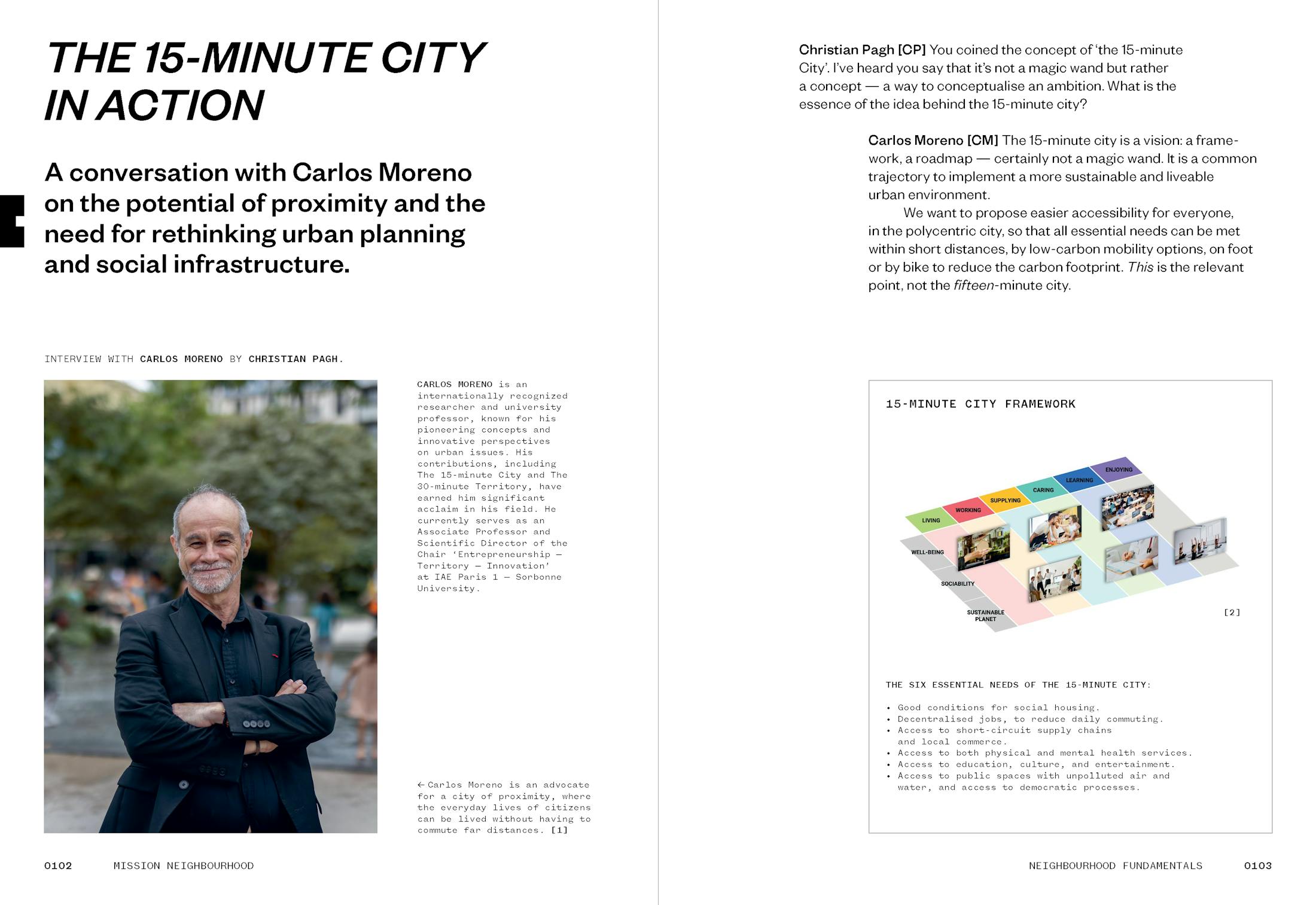The 'Mission Neighbourhood' book is out!

The cover of the book, designed (as the publication as such) by Snøhetta Design. The book is published by the Danish Architectural Press in Copenhagen, a publishing house that ever since their establishment in 1949 have focused on publications in the fields of architecture and urbanism, Jan Gehls famous Life between buildings (1971) being but one of many books they have published over the years.
With 35 contributions from renowned Nordic and International architects, academics, public servants and developers, the publication offers new insight into how to form more sustainable, diverse and meaningful neighbourhoods.
The selection is largely built on the 8th edition of the Oslo Architecture Triennale, also entitled Mission Neighbourhood – (Re)forming Communities. The subtitle, (Re)forming Communities, underscores the double emphasis on (architectural) form – the ways places are planned, designed and built – and political reform – how we might rethink policies, economic models, governance structures and other defining conditions for the built environment.
Mission Neighbourhood – (Re)forming Communities is published by the Danish Architectural Press and designed by Snøhetta Design. The Oslo launch happened November 28 at the architecture venue Byens Tak, and the book is available for purchase internationally through the publisher and in Norway through Tronsmo in Oslo and Tekstallmenningen in Bergen.

Cities for people. While there are differences in taste, there are many qualities in our built environment that are appreciated across cultures. Understanding what matters requires one to consider what opportunities a place or space offers, and what world it opens, so to speak. Paulus’ plass in Grünerløkka, Oslo, offers a place to play and watch people, this most basic of human joys. The presence of water has also proven to be one of these seemingly universal qualities that attract people. Photo: Christian Pagh.
Contributors include Jos Boys, Cobe, Camilla van Deurs, EFFEKT, Jan Gehl, Dan Hill, Indy Johar, Carlos Moreno, Juhani Pallasmaa, Kate Raworth, Martha Thorne and Finn Williams. It takes a neighbourhood to make a book on, well, neighbourhoods. The publication, situated in the discourse of architecture and urbanism, is directed towards everyone interested in neighbourhoods and urban development, from professionals to engaged citizens. The book presents projects, practices and perspectives pushing forward more sustainable, diverse and meaningful neighbourhoods.
Why neighbourhoods? The neighbourhood is a fundamental physical and social horizon for human life. Yet, the intricate mix of relations that makes up a neighbourhood, is rarely given the attention it deserves in policy making or urban planning.

Do it yourself. The Copenhagen freetown of Christiania, with its specific, anti-establishment history of having been taken over by squatters in the 1970s, keeps fascinating, maybe because it is such a rich outward expression of its inhabitants. The neighbourhood offers a diversity of collective and individual constructions and decorations, practically unseen in today’s tidy urban environments. The reality of Christania is more complicated, with much conflict, but at its best, it radiates with a sense of what the opportunity to create your own neighbourhood can offer. Photo: Sean Da Ros.
The selection of texts explores the urgent, urban issues of our time – from social infrastructure, nature and biodiversity, to mobility and urban governance – in a neighbourhood perspective. Intent on inspiring action, the book offers a rich variety of best practice projects, perspectives and hands-on advice.
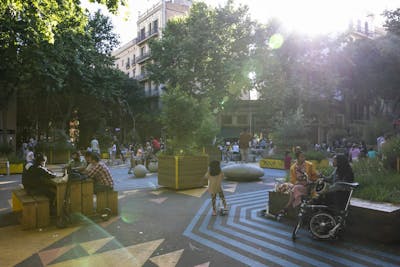
Block party. Street scenes from Sant Antoni, Barcelona. The freed up space between the blocks has made Barcelona's superblocks popular meeting points in the neighbourhood. Here the informal square is ised by citizens of all ages. Photo: Edu Bayer, City of Barcelona.
The book is edited by Christian Pagh and Thomas Cook, respectively Director & Chief Curator and Head of Development of the Oslo Architecture Triennale.
The contributors (in order of appearance):
- Juhani Pallasmaa
- Jan Gehl
- Jos Boys
- Peter Hemmersam (The Oslo School of Architecture (AHO))
- Carlos Moreno
- Dan Hill (Melbourne School of Design)
- Einar Sneve Martinussen, Joakim Formo & Dan Hill (AHO)
- Karl Landin, Åsa Bjerndell, Victoria Percovich Gutierrez (CSAM)
- Scott Lloyd (TEN) & Alexis Kalagas
- Johannes Goa Ludvigsen (Sweco) & Kenneth Dahlgren (Aspelin Ramm)
- Marit Elisabeth Jensen (Stor-Oslo Eiendom) & Ragnhild Olaussen (District Bjerke)
- Alexander Eriksson Furunes & Lars Eivind Bjørnstad
- Mads Birgens & Jacob Blak (Cobe)
- Jenny Grettve When! Wen!)
- Oaza Collective
- Iwan Thomson (Lala Tøyen)
- Robert Martin
- Jakob Steen Christensen (JAJA Architects)
- Martin Arfalk, Leslie Norris & Cyril Pavlu (Mandaworks)
- Martha Thorne
- Matthew Dalziel (Studio Dalziel)
- Halvor W. Ellefsen (AHO)
- Camilla van Deurs (City Architect of Copenhagen)
- Hanne Johnsrud (Bykuben)
- Jens Linnet (BOGL)
- Bernd Vlay & Lina Streeruwitz (StudioVlayStreeruwitz)
- Arild Eriksen (Fragment)
- Sinus Lynge & Tue Foged (EFFEKT)
- Meggan Collins & Indy Johar (Dark Matter Labs)
- Kate Raworth, Leonora Grcheva & Marie Indrelid Winsvold (Dougnut Economics Action Lab / Hav Eiendom)
- Martin Laursen (ADEPT)
- Hanna Harris (Chief Design Officer of Helsinki)
- Finn Williams (City Architect of Malmö)
- Morten S. Thaning (Copenhagen Business School)
